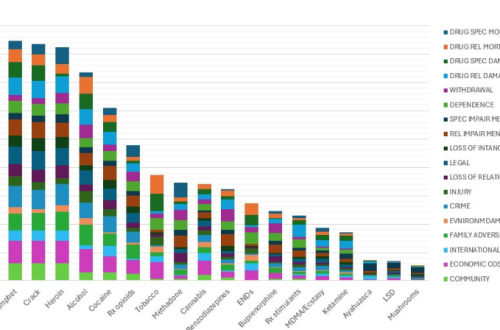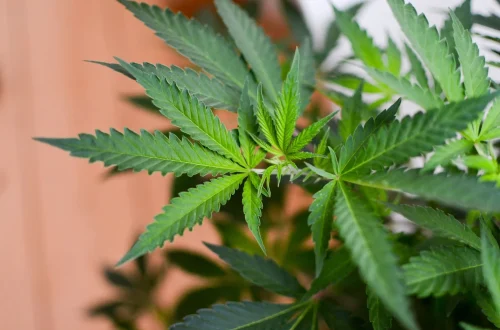Newshawk: http://www.drugsense.org/donate.htm
Pubdate: Thu, 1 Jul 2010
Source: New Times (San Luis Obispo, CA)
Webpage: http://mapinc.org/url/n1IgAd0J
Copyright: 2010 New Times
Contact: [email protected]
Author: Tom Ammiano
Note: California Assemblymember Tom Ammiano represents the 13th
Assembly District, which includes San Francisco.
Cited: Proposition 19 http://www.taxcannabis.org/
Referenced: National Commission on Marijuana and Drug Abuse
http://mapinc.org/url/wL7rRxiZ
Referenced: California Research Advisory Panel http://mapinc.org/url/bJc9ZikX
Bookmark: http://www.mapinc.org/topic/Tax+Cannabis+Act
TAKING THE NEXT STEP FOR CALIFORNIA
We can set an example for the nation as we did on medical marijuana
by passing the Regulate, Control and Tax Cannabis Act of 2010 in November
What if California could raise hundreds of millions of dollars in new
revenue to preserve vital state services without any tax increases?
And what if at the same time, we could, without any new expense, help
protect our endangered wilderness areas while making it harder for
our kids to get drugs?
That is precisely what the Regulate, Control and Tax Cannabis Act of
2010 initiative slated for the November ballot would do. This
measure, building off the legislation I introduced last year, is the
logical next step in California’s and hopefully the nation’s public
policy towards marijuana.
The legalization of cannabis would not only address California’s
growing economic crisis but, more importantly, would begin a rational
public policy discussion about how best to regulate the state’s
largest cash crop estimated to be worth roughly $14 billion annually.
Placing marijuana under the same regulatory system that now applies
to alcohol represents the natural evolution of California’s laws and
is in line with recent polls indicating strong support for
decriminalizing marijuana.
To understand the movement behind legalization, it is helpful to
understand how we got here. The state first prohibited marijuana in
1913. When Congress later passed the Controlled Substances Act in
1970, marijuana was temporarily labeled a “Schedule I substance”–an
illegal drug with no approved medical purposes.
But Congress acknowledged they did not know enough about marijuana to
permanently classify it to Schedule I, so a presidential commission
was created to review the research. In 1972, the National Commission
on Marijuana and Drug Abuse advised Congress to remove criminal
penalties on the possession and nonprofit distribution of marijuana.
“Neither the marijuana user nor the drug itself can be said to
constitute a danger to public safety,” concluded the commission, led
by then-Governor Raymond Shafer of Pennsylvania. President Nixon and
Congress ignored the report. Since then, more than 14 million
Americans have been arrested on marijuana charges and marijuana has
remained listed as a Schedule I substance–actually treated by
federal law as more dangerous than cocaine and methamphetamine.
Here in California, enforcement costs for marijuana offenses had
become so high by 1975 that the legislature decriminalized possession
of small quantities in the Moscone Act, saving the state $100 million
each year. In 1990, the California Research Advisory Panel urged
further decriminalization, noting “an objective consideration of
marijuana shows that it is responsible for less damage to society and
the individual than are alcohol and cigarettes.” By 1996, the
medicinal benefits of marijuana had been well documented and
California voters legalized the medical use of marijuana by passing
Proposition 215. With New Jersey ratifying medical use earlier this
year, there are now 14 states that support medical marijuana.
Despite this nationwide shift, the costs of modern prohibition
continue with more than 61,000 Californians arrested for misdemeanor
marijuana possession in 2008 alone. That same year, about 60,000
violent crimes went unsolved statewide, yet we continue to spend
hundreds of millions of dollars and countless law enforcement hours
arresting people for low-level marijuana crimes, further
overburdening courts and prisons. Jail beds devoted to marijuana
offenders could be “used for other criminals who are now being
released early because of a lack of jail space,” the state
Legislative Analyst’s Office wrote.
Black-market marijuana is also a main source of revenue for the vast
criminal enterprises that threaten peace on our streets and weaken
national security on our borders. According to the White House Office
of National Drug Control Policy, the Mexican drug cartels get more
than 60 percent of their revenue from selling marijuana in the United States.
The simple reality is that resources tied up fighting marijuana would
be better spent solving and preventing violent felonies and other major crimes.
When U.S. Attorney General Eric Holder announced last year that the
federal government would end raids on marijuana dispensaries in
California and other states with medical marijuana laws, it was a
clear sign the tide was turning. Fact regarding marijuana is finally
overcoming fiction.
There may be disagreements about what direction to take but it is
clear to everyone involved our current approach is not working.
Regulation allows common-sense controls and takes the marijuana
industry out of the hands of unregulated criminals.
As a member of the State Assembly, I believe we must acknowledge
reality and bring innovative solutions to the issue of marijuana, not
simply wait passively for the federal government to act. This is how
change happens. Californians lead rather than follow, and we can set
an example for the nation as we did on medical marijuana by passing
the Regulate, Control and Tax Cannabis Act of 2010 in November.



